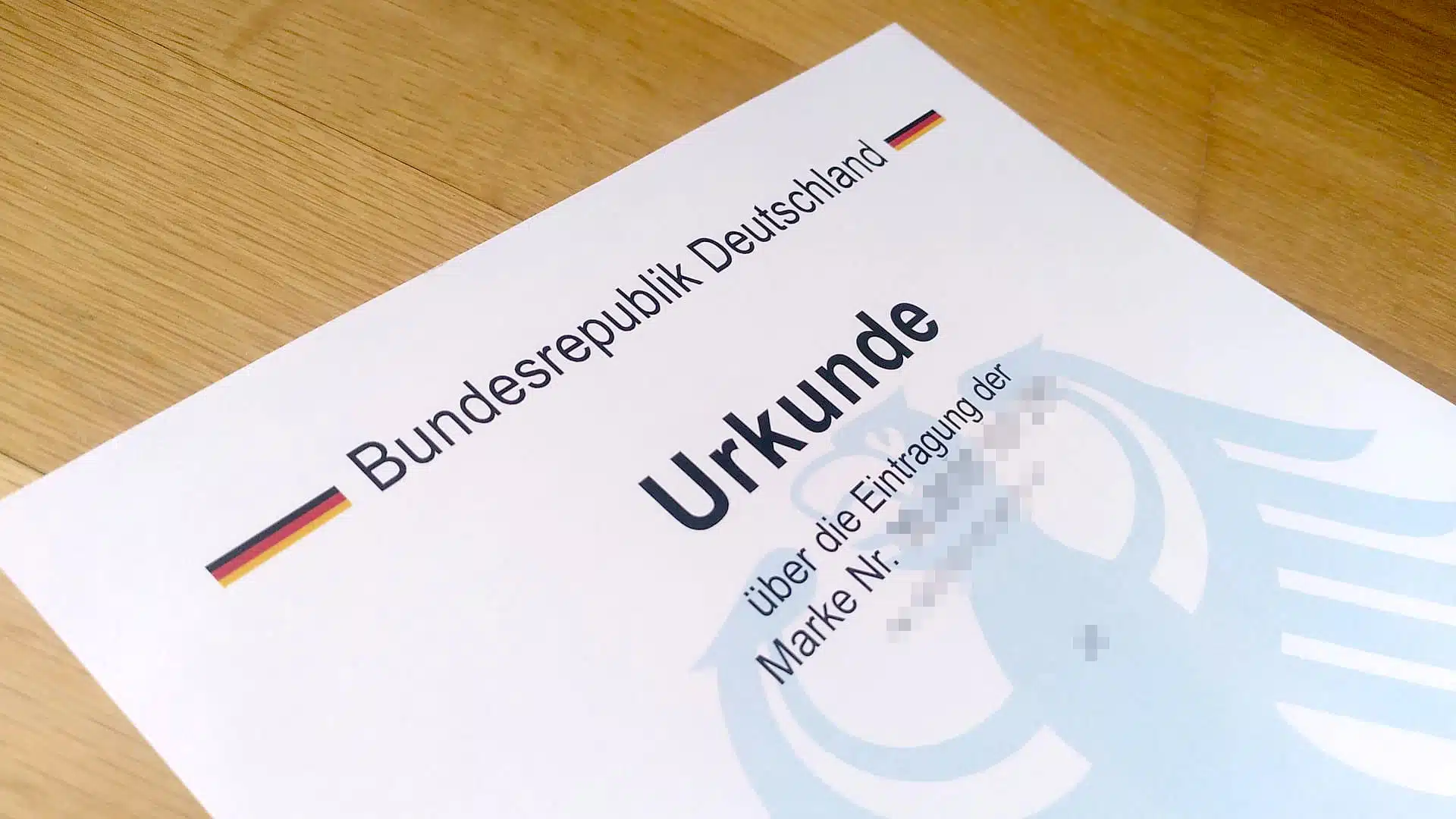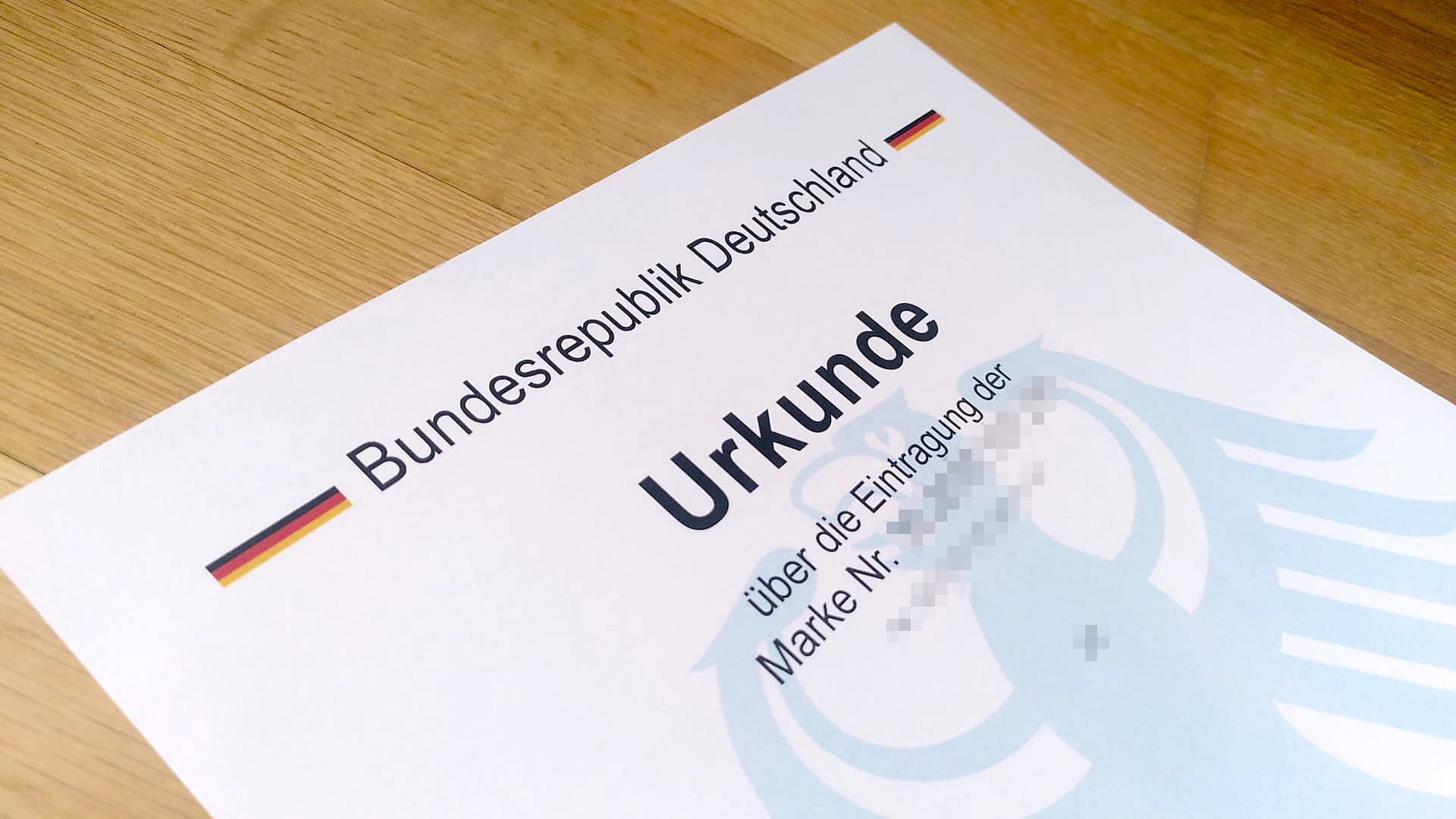
Brand name registration in Germany:
the complete guide
As a business owner in Germany, protecting your brand name is essential for the success of your venture. With the right strategies and tools, you can ensure that no one else uses your trademark without permission and take action against any infringement.
This guide provides an overview of the steps involved in registering, monitoring, and enforcing trademark rights in Germany. It covers fees and payment methods, registration timescales, enforcement measures, and international or European trademark applications. So whether you’re just starting out or looking to expand into new markets, this guide will help you confidently protect your brand name.
How to register your brand name as a trademark in Germany
What are the requirements and criteria for german trademark registration?
- The trademark must be distinctive and not descriptive of the goods or services it covers.
- The trademark must not conflict with any earlier rights of third parties, such as existing trademarks, company names, domain names, etc.
- The trademark must not contradict public policy or morality, such as deceptive, offensive, or misleading marks.
- The trademark must be represented graphically and consist of any signs the senses can perceive, such as words, logos, shapes, colors, sounds, etc.
- The trademark application must specify the goods or services for which protection is sought according to the Nice Classification system. A maximum of three classes can be included in the basic application fee. Additional classes require extra fees.
- The trademark application must be filed before the Trademark Department of the German Patent and Trademark Office (DPMA) by a local agent. A power of attorney is not necessary. Foreign applicants do not need a domestic registration.

How to conduct a trademark search to check the availability of your brand name?
The DPMAregister, which is the official German register for trademarks and other IP rights. You can search for trademarks by various criteria, such as word mark, owner name, class number, etc. You can also access the current legal status of each trademark.
The TMview database, which is a common online service of national and regional IP offices in Europe. You can search for trademarks registered or applied for at any participating office. You can also compare and analyze different trademarks across offices.
The Madrid Monitor database, which is a service of the World Intellectual Property Organization (WIPO). You can search for international trademarks registered or applied for under the Madrid System. You can also track the status of your international application or registration.
These databases are free of charge and available online. However, they are not exhaustive and do not guarantee that your brand name is available for registration. Therefore, it is advisable to consult a professional trademark agent before filing your application.
How to choose the appropriate classes of goods and services for your trademark application?
Identify the goods or services that you want to protect with your trademark. You should be as specific and clear as possible about what you offer or plan to offer under your brand name.
Consult the Nice Classification system, which is an international standard for classifying goods and services into 45 classes (34 for goods and 11 for services). You can find a list of all the classes and their descriptions on the DPMA website2 or on the WIPO website.
Select the classes that best match your goods or services. You can use the alphabetical list or the explanatory notes of the Nice Classification to help you find the relevant terms. You can also use online tools such as TMclass or EuroClass to search for terms and their corresponding classes.
Indicate the number of classes you want to include in your application. The fee you have to pay depends on how many classes you choose. The basic application fee covers up to three classes. Each additional class requires an extra fee.
Choosing the right classes is important for defining the scope of your trademark protection. Therefore, it is advisable to consult a professional trademark agent before filing your application.
How to file an application for trademark registration at the German Patent and Trade Mark Office (DPMA)?
Choose your filing option. You can use either online or electronic filing using DPMAdirektWeb (without signature) or DPMAdirektPro (with signature), or fill in the paper-based application form and send it by post. The online option is faster and cheaper than the paper-based filing.
Provide your contact details as the applicant and/or representative. You should include your name, address, phone number, email address, etc. If you are a foreign applicant, you do not need a domestic registration or a representative unless you have been requested by the DPMA to appoint one.
Indicate your trademark type and representation. You should specify what kind of trademark you are applying for (e.g., word mark, figurative mark, sound mark, etc.) and provide a clear and accurate graphical representation of your trademark. You can also attach any additional documents that support your application (e.g., color claim, priority claim, etc.)
Specify your goods or services classes. You should indicate how many classes of goods or services you want to include in your application according to the Nice Classification system. The fee you have to pay depends on how many classes you choose. The basic application fee covers up to three classes. Each additional class requires an extra fee.
Pay the application fee. You should pay the fee within three months of filing your application. Otherwise, your application will be deemed withdrawn. You can pay by bank transfer or direct debit.
After filing your application, you will receive an acknowledgement of receipt from the DPMA with a reference number for your application. The DPMA will then examine your application for formal and substantive requirements and inform you of any deficiencies or objections.
What are the fees and payment methods for trademark registration in Germany?
trademark registration fees in Germany vary depending on the number of classes and legal fees. The basic application fee for up to three classes is €300 for online filing or €350 for standard filing. Each additional class costs €100. You can pay by direct debit, bank transfer or credit card.
How long does it take to register your brand name as a trademark in Germany?
The time to register a trademark in Germany depends on several factors, such as whether the application is in due form and whether there are any oppositions. Tt takes approximately 6-9 months from first filing to registration. The registration is valid for ten years and can be renewed for periods of ten years.
How to protect and enforce your brand name as a trademark in Germany
What are the trademark rights and obligations for owners in Germany?
A trademark owner in Germany has certain rights and obligations regarding their trademark. Some of them are:
The right to use the trademark exclusively for their products or services.
The right to prevent others from using a similar or identical trademark for similar or identical products or services without their consent.
The right to license, assign or transfer their trademark to others under certain conditions.
The obligation to pay the filing fee, renewal fee and maintaining their trademark registration.
They must genuinely use their trademark and not let it become generic or misleading.
Trademark enforcement Germany: How can I enforce my trademark rights in Germany?
There are different ways to enforce your trademark rights in Germany, depending on the situation and your goals. Some of them are:
- Sending a cease-and-desist letter to the infringer, demanding them to stop using your trademark or a similar one without your consent.
- Filing a preliminary injunction with a court, which can order the infringer to stop using your trademark or a similar one immediately until a final decision is made.
- Filing a lawsuit with a court, which can grant you various remedies such as damages, destruction or recall of infringing products, disclosure of information or publication of judgment.
- Using alternative dispute resolution (ADR) techniques such as mediation or arbitration, which can help you resolve your dispute with the infringer amicably and confidentially. However, ADR is rarely used in trademark infringement cases in Germany.
How to monitor and renew your trademark registration in Germany?
To monitor and renew your trademark registration in Germany, you need to:
- Keep an eye on new trademark applications that may conflict with your trademark or dilute its distinctiveness.
- Pay attention to any notices or communications from the German Patent and Trade Mark Office (DPMA) regarding your trademark status.
- Pay a renewal fee every ten years to maintain your trademark registration. The renewal fee is 750 euros for up to three classes of goods or services, plus 260 euros for each additional class.
- File a request for renewal with the DPMA before or within six months after the expiry of your trademark registration. You can renew your trademark for all or some of the registered goods or services.
Trademark protection: How to deal with trademark infringement and opposition cases in Germany?
Trademark infringement occurs when a third party uses a sign that is identical or similar to a registered trademark without authorization and creates a likelihood of confusion among consumers. Trademark owners can seek an injunction to stop the infringing use and claim damages for any losses suffered.
Trademark opposition is a procedure that allows third parties to challenge the registration of a trademark within a certain period of time after it has been published by the German Patent and Trade Mark Office (GPTO). The opposition must be based on prior rights, such as earlier trademarks or well-known marks. The opposition fee is 250 euros and covers one opposing sign.
If the opposition is successful, the GPTO will cancel the registration of the contested trademark. If the opposition is unsuccessful, the opponent can appeal to the Federal Patent Court. Alternatively, third parties can also file an application for cancellation of a trademark based on absolute or relative grounds for refusal at any time after its registration.
How to register your brand name as an international or European trademark
What are the advantages and disadvantages of registering your brand name as an international or European trademark?
Registering your brand name as an international or European trademark can have some advantages and disadvantages depending on your business goals and needs.
Some of the advantages are:
- You can protect your name against imposters and copycats who might try to use it without your permission or confuse your customers.
- You can secure your brand on social media platforms that have policies to prevent abuse of trademarks by others.
- You can renew your trademark easily every decade without having to prove its use or reputation.
- You can build brand loyalty and pride among your customers and employees by showing that you value your identity and quality.
- You can expand your market reach and opportunities by having a single registration that covers multiple countries.
Some of the disadvantages are:
- You might face opposition or cancellation actions from third parties who have prior rights or interests in similar trademarks in some countries.
- You might have to comply with different laws and regulations in each country where you want to enforce your trademark rights.
- You might have to pay higher fees and costs for filing, maintaining, and defending your trademark than if you registered it nationally or regionally.
- You might have to adapt your brand name or logo to different languages, cultures, or preferences in some markets.
Ultimately, the decision to register your brand name as an international or European Union trademark depends on various factors such as:
- The nature and scope of your business activities
- The current and potential markets for your products or services
- The availability and suitability of alternative forms of protection
- The risks and benefits of each option
International trademark registration procedure: How to apply for a trademark through the World Intellectual Property Organization (WIPO)?
To apply for international registration through the WIPO, you need to follow these steps:
- First, you need to register or apply for a national or regional trademark in your “home” IP Office, which is the office of the country or region where you have a real and effective industrial or commercial establishment, or where you are domiciled, or where you are a national2. This trademark is called the basic mark and serves as the basis for your international application.
- Second, you must file an international application through your home IP Office using WIPO’s online service, Madrid e-Filing. You need to provide information such as your name and address, a reproduction of your trademark, a list of goods and services covered by your trademark, and the countries where you seek trademark protection. You also need to pay the fees for filing and designating each country. You can use WIPO’s fee calculator to estimate the costs.
- Third, WIPO will examine your international application for formal requirements and assign it a registration number and date. WIPO will then notify your home IP Office and the IP Offices of the countries you have designated. WIPO will also publish your registration in its official gazette called WIPO Gazette of International Marks.
- Fourth, each designated IP Office will examine your international registration according to its own trademark law and procedures. If there are no objections or refusals within a specified time limit (usually 12 or 18 months), your trademark will be protected in that country as if it had been registered directly there.
If there are any objections or refusals, you will have to deal with them separately in each country.
How to apply for a European Union trade mark (EUTM) through the European Union Intellectual Property Office (EUIPO)?
To apply for a European Union trade mark (EUTM) through the European Union Intellectual Property Office (EUIPO), you need to follow these steps:
- First, you need to prepare your application by choosing your trade mark type (word, figurative, shape, etc.), identifying your goods and services using the Nice Classification system, and selecting your language of filing and second language. You also need to check if your trade mark meets the requirements of distinctiveness, availability, and legality. You can use EUIPO’s online forms, such as TMview, eSearch plus, and TMclass to help you with these tasks.
- Second, you need to file your application online using EUIPO’s user area or e-filing service. You need to provide information such as your name and address, a representation of your trade mark, a list of goods and services covered by your trade mark, and the countries where you want to protect your trade mark. You also need to pay the fees for filing and classifying each class of goods and services. The basic fee is 850 EUR for one class of goods or services online or 1000 EUR on paper. Each additional class costs 50 EUR online or 150 EUR on paper up to three classes. For more than three classes, each additional class costs 150 EUR online or 400 EUR on paper.
- Third, EUIPO will examine your application for formal requirements and assign it an application number and date. EUIPO will then conduct a search for identical or similar earlier trade marks registered in the EU or in some national IP offices. EUIPO will send you a search report with the results of this search within six weeks from the filing date.
- Fourth, EUIPO will examine your application for absolute grounds of refusal such as lack of distinctiveness, descriptiveness, genericness, etc. If there are no objections or refusals within four months from the filing date (or six months if you claim priority), EUIPO will publish your application in its official bulletin called EU Trade Marks Bulletin.
- Fifth, within three months from the publication date (or nine months if an extension is requested), any third party can oppose your application based on relative grounds of refusal such as likelihood of confusion with an earlier trade mark. If there are any oppositions filed against your application, EUIPO will notify you and initiate an adversarial procedure where both parties can submit arguments and evidence. If there are no oppositions filed against your application or if they are rejected by EUIPO after examining them on their merits, your trade mark will be registered and published in the EU Trade Marks Bulletin.
When it comes to protecting your brand in Germany, trademark registration is a must. By understanding the fees and payment methods for trademark registration in Germany, as well as how long it takes to register and enforce rights, business owners can have peace of mind that their intellectual property is being safeguarded. And by registering an international or European trademark through WIPO or EUIPO respectively, businesses can ensure that they are protected on an even wider scale. With these important steps taken care of, you as an entrepreneur can focus more energy on growing your business knowing that your valuable brands are safe from infringement.
